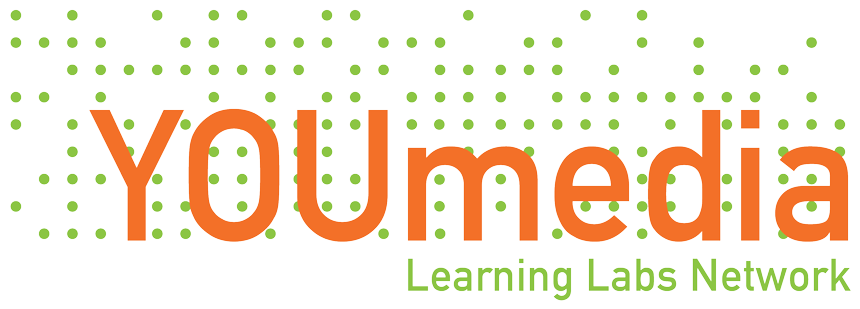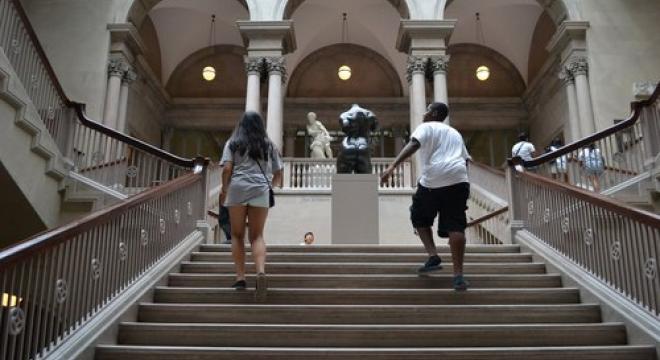Collaboration can be complicated. Any coordinated effort with several moving parts is inherently complex. But what if those moving parts include hundreds of youth programs, thousands of young people, and a legion of community and civic organizations? There’s not really a word to describe it—because it had never happened before.
This past summer was a landmark moment for educational programming, and also for the city of Chicago. More than 210,000 youth were involved in a dynamic partnership between city officials, the Mozilla Foundation, the MacArthur Foundation, and more than 100 youth-serving organizations, all of which were working to encourage interest-based learning in an orchestrated effort called the Chicago Summer of Learning (CSOL).
“The Chicago Summer of Learning stands out as a national example—for its innovation, scope, and the tremendous partnerships that make it possible,” said Senior Advisor for Nonprofit Partnerships at the U.S. Department of Education Michael Robbins in a recent press release. “And this is not just about summer—the work that is being done here in Chicago can inform how we advance student engagement and learning year round.”
The Theme Was STEAM
The uniting theme for the summer was STEAM-based programming. “STEAM” adds the arts into the existing acronym of science, technology, engineering, and mathematics.
Participating organizations, including everyone from youth orchestra creators El Sistema Chicago to the Chicago Park District, developed specific programming that focused on STEAM. For example, designers at the University of Chicago’s Game Changer Chicago Design Lab developed an alternate-reality game called “The Source” that captivated 140 of Chicago’s youth using STEAM-centered activities. One of these activities involved mapping all of the sidewalks at the University of Chicago.
The game told a multi-layered narrative about a 17-year-old girl from the South Side who was trying to find her father, as well as a cure for her brother’s leukemia. Through a transmedia approach that involved YouTube videos, online challenges, social media, and on-site gameplay, students completed weekly research and quizzes that would allow them to advance.
The content surrounded a weekly theme, like engineering or topography, but also touched on difficult issues such as sexually transmitted diseases and homophobia. Learning Design Specialist Ashlyn Sparrow explained that this collaborative environment spurred dialogue. “We opened youth up to talking,” she said, “and really got them to think about ethics and tolerance.”
“We had a very, very, very diverse group of students,” Sparrow said. “It was great that they got to communicate with new people, but also find that they all shared something in common.”
Ultimately, the biggest takeaway was the power of letting youth provide direction for their activities and curriculum, which fits right in with the interest-driven focus of CSOL. “Youth seem very interested when they can take control,” Sparrow said. “Giving youth creative freedom is probably the best way to go.” She explained that many participants were interested in game design, and that they would spend hours on projects once she and her colleagues integrated the subject into the activities.
This interest-driven approach was one of the key pillars of CSOL. In addition to this focus, organizers of the initiative had three main goals: get a large number of organizations involved, ensure the people behind those organizations were properly trained, and get youth excited about the idea.
The third piece was the most difficult but also the most rewarding. So, how do you get students engaged and excited about summer learning, especially when it has carried the negative connotation associated with “summer school”? The answer: a recipe of relatable mentors, programming that speaks to the needs of individual youth, and positive reinforcement.
Measuring the Learning that Happens
In this case, the reinforcement came in the form of “badges.” Last year, Mozilla unveiled their Open Badges project, which aims to reward self-directed learning in and out of the classroom, via an online series of badges. Often compared to a badge awarded to a Boy Scout or Girl Scout, Mozilla’s portable, visible online badges showcase the pathways of learning, not just the end achievement. They’re used to motivate, recognize achievement, and establish credibility.
“The goal of badges is to capture your complete learning path—inside and outside of the classroom,” said Mozilla’s marketing and community strategy leader Meg Cole. “It’s really to help you build and communicate your reputation, and reinvent your credentials so they’re transferrable.” They are creating a new kind of currency for academic and other achievements.
“Badges make learning more adaptable to change and open to innovation,” explained this video, created for the CSOL YouTube channel. “Most importantly, badges make learning a lifelong pursuit. By recognizing the learning that happens anywhere and share it in the places that matter, badges cultivate values of openness, sharing, and innovation in learning today.”
A City of Innovators
Chicago was the first city to use badges in a citywide initiative; nearly 100,000 badges were issued during the Summer of Learning. On top of that, Mayor Emanuel promised that if Chicago’s youth read more than 2 million books during the summer, he would jump into icy Lake Michigan for Chicago’s annual Polar Bear Plunge in March. And guess what? They did. Get your swim trunks out, Mayor.
The initiative was such a success that the mayor has already signed on to participate next year. “This summer, I visited Summer of Learning sites across our city where I witnessed the energy and enthusiasm of our students as they challenged themselves creatively, intellectually, and socially,” he said. “This year’s high participation level confirmed that by turning our entire city into a classroom during the summer, we can make learning fun and accessible for every child in Chicago. We look forward to continuing this tradition next year.”
While CSOL certainly required a lot of communication and participation from both public and private organizations, the opportunities provided for low-income teens—who are at the greatest risk for summer learning loss—are arguably the collaboration’s greatest success. Young learners interested in rocketry or aquaponics had a place over the summer to explore these interests, even if they lacked a computer at home.
All this is not to say there were some kinks to work out in this first Summer of Learning. Badges can be confusing, their currency in the real world—especially in the classroom—can be hard to document, and not every adult administering the program is as proficient in technology as might be needed. In fact, some programs don’t have access to computers, as they’re outside exploring nature or building things instead. Questions about where the reams of data on kids’ learning pathways will reside and who is responsible for privacy issues, are still being worked out. How to assign kids to programs is another; if a teen signs up for a neighborhood tennis program because it’s close to home but really prefers a robotics class, how does that original program point him or her in the right direction? After all, that’s one of the key advantages of a rich network of learning.
But these lessons and others are already being dissected in preparation for the 2014 Summer of Learning in Chicago, and, if we’re lucky, in other cities as well.
By Kelsey Herron

